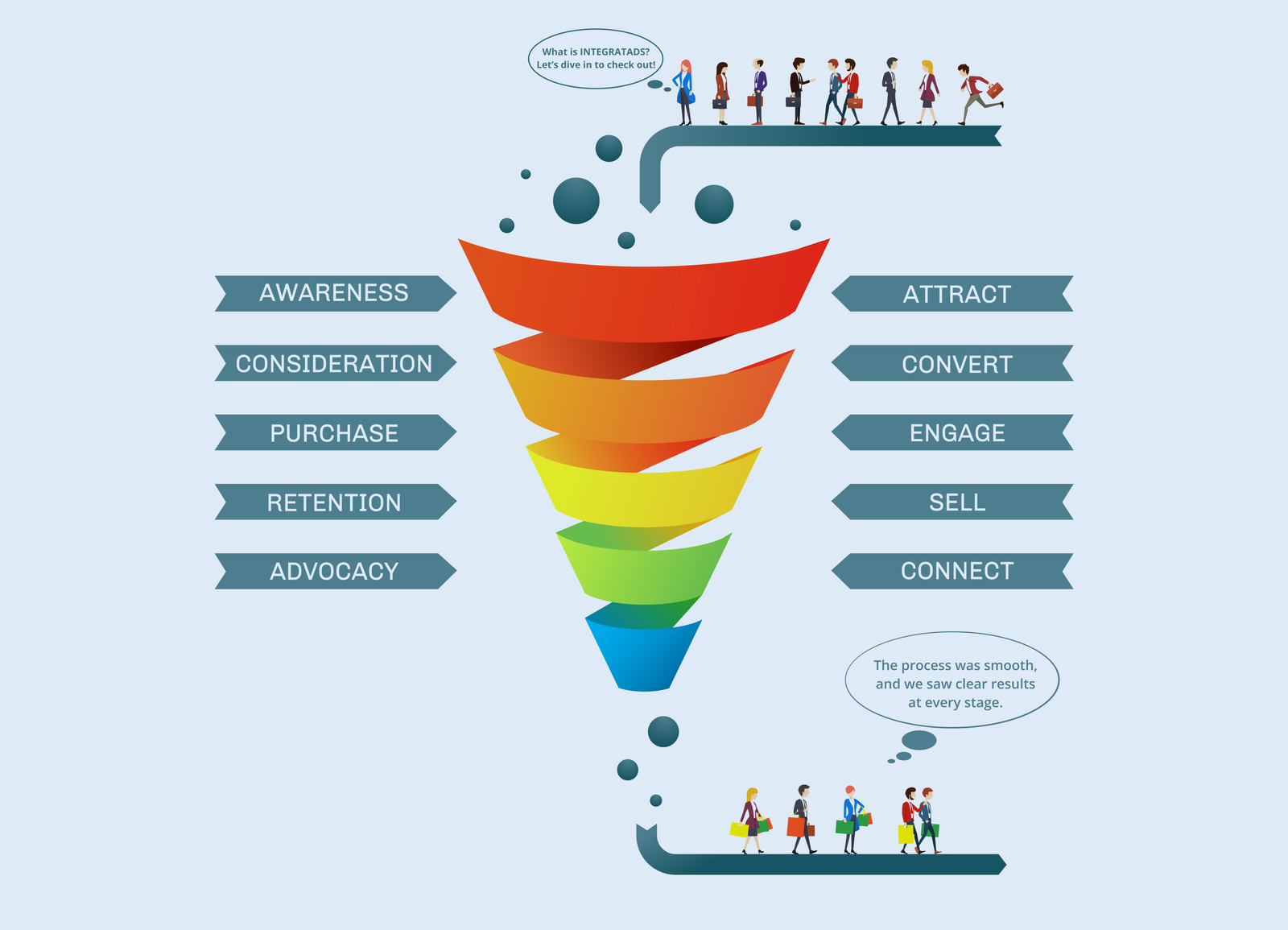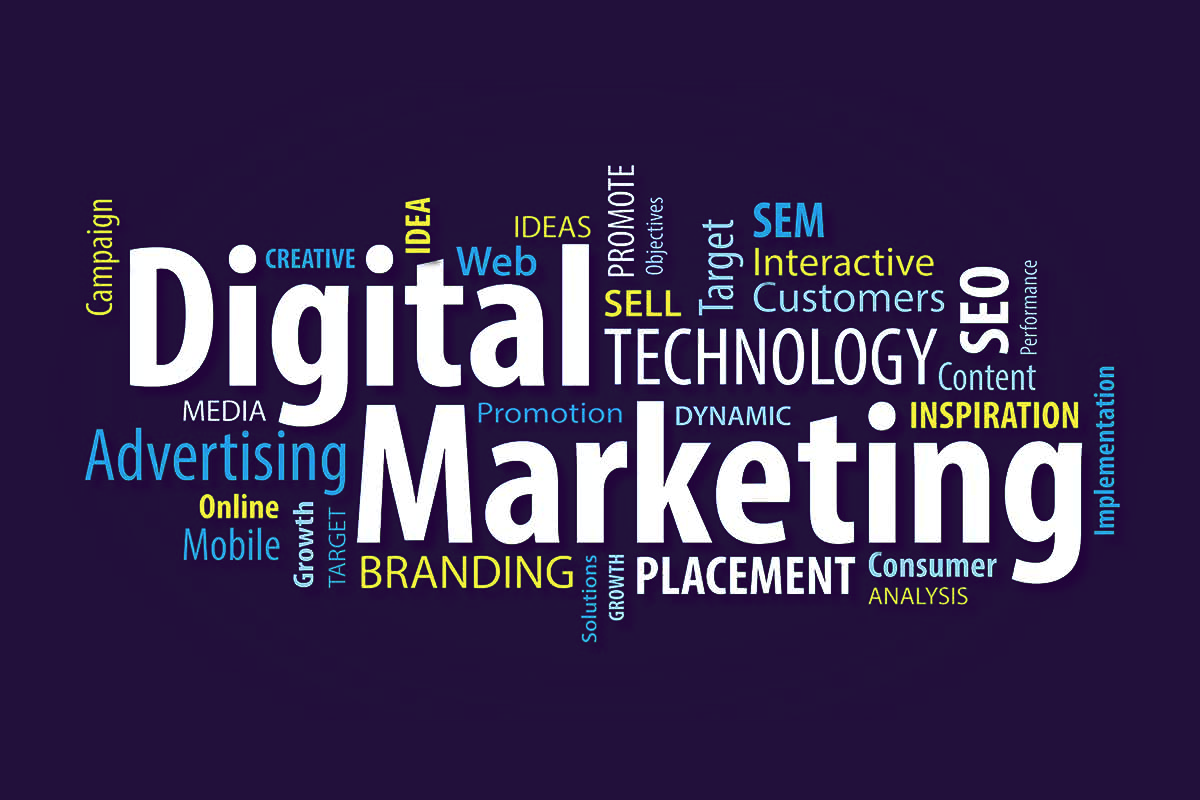
What is a Digital Marketing Funnel and How to Optimize It?
- Digital Agency
- Marketing Funnel
Understanding and optimizing a digital marketing funnel is crucial for maximizing your online presence and converting leads into loyal customers. This blog will guide you through the essentials of a digital marketing funnel, its critical stages, and practical strategies for optimizing each phase.
Understanding the Digital Marketing Funnel
Components of the Funnel:
A digital marketing funnel guides potential customers from initial awareness to loyal advocacy through several key stages:
- Awareness Stage:
This is where potential customers learn about your brand,
often through social media ads, Google searches, or
referrals.
- Interest Stage:
Potential customers are beginning to show interest at this
stage. Engaging content, such as blogs and videos, helps
build this interest.
- Consideration Stage:
Leads are now evaluating your product or service. Please
provide detailed information, testimonials, and
comparisons to assist their decision-making.
- Conversion Stage:
The lead is ready to purchase. Use promotions, free
trials, and strong calls to action to encourage the final
decision.
- Loyalty and Advocacy Stage:
After the purchase, focus on retaining customers and
turning them into brand advocates through excellent
service, loyalty programs, and engaging follow-up content.
Role of Each Stage:
Each stage of the funnel serves a specific purpose:
The
Awareness
stage increases visibility.
The
Interest
stage educates your audience about your brand.
The
Consideration
stage deepens their connection with your
offerings.
The
Conversion
stage solidifies their decision to buy.
The
Loyalty
stage encourages ongoing engagement, fostering repeat
sales and referrals.
Key Metrics to Monitor in Your Funnel
Traffic and Source Analytics:
Monitoring where your visitors come from (e.g., search engines, social media platforms, email campaigns) helps you understand which channels are most effective and where to focus your marketing efforts.
Conversion Rates:
Analyzing conversion rates at each stage of the funnel reveals where you’re losing potential customers and where you’re succeeding, allowing you to make targeted improvements.
Customer Retention Rates:
Tracking how many customers make repeat purchases or remain engaged with your brand measures the effectiveness of your retention strategies.
Lead Leakage:
Identifying stages where potential customers drop out (lead leakage) can highlight problematic areas of your funnel that need refinement.

Optimizing the Digital Marketing Funnel
Improving Awareness:
1. Implement
SEO strategies
to increase organic reach.
2. Engage audiences on
social media
with captivating content.
3. Utilize
paid advertising
campaigns to boost visibility.
Enhancing Engagement and Interest:
1. Develop a robust
content marketing strategy
that provides value and nurtures leads.
2. Offer interactive tools like
quizzes and webinars
to deepen engagement.
Boosting Conversion Rates:
1. Optimize
landing pages
to be clear, compelling, and conducive to
conversions.
2. Conduct
A/B testing
to find the most effective elements.
3. Create clear and compelling
calls-to-action
that guide users to the next step.
Increasing Customer Retention:
1. Run targeted
email marketing campaigns
to keep your brand top-of-mind.
2. Develop
membership programs
that offer exclusive benefits.
3. Provide exceptional
customer service
to solve issues and exceed expectations.
Technology and Tools:
Leverage marketing automation tools and CRM systems to streamline processes and maintain detailed insights into customer behaviors. Utilize analytics platforms to gather data and make informed decisions.
Case Studies and Examples:
Illustrating successful strategies with real-world examples provides a practical perspective on what works in digital marketing. Common pitfalls, such as neglecting mobile optimization or underestimating the power of email marketing, offer learning opportunities to avoid similar mistakes.
Conclusion:
The digital marketing funnel is a dynamic model that requires continuous attention and adjustment. Regular review and adaptation of your strategies based on performance metrics are essential to stay ahead in the competitive digital landscape.FAQ's
-
How to Build a Digital Marketing Funnel?
Building a digital marketing funnel involves several key steps:
1. Define Your Audience:
Understand who your customers are and what they need.
2. Set Clear Objectives:
Determine what you want each stage of the funnel to achieve.
3. Create Engaging Content:
Develop content tailored to the needs and interests of potential customers at each stage of the funnel.
4. Implement Tools and Technology:
Use CRM and marketing automation tools to streamline the process.
5. Monitor and Optimize:
Regularly analyze performance data to identify areas for improvement and refine your funnel accordingly. -
What is a Funnel in Digital Marketing?
A digital marketing funnel maps potential customers' journey from discovering your brand to making a purchase and beyond. It helps marketers strategize and nurture leads at each stage to drive conversions and build long-term customer relationships.
-
What is a Full-Funnel Approach in Digital
Marketing?
A full-funnel approach targets customers at every stage of their buying journey—awareness, interest, consideration, and loyalty. It ensures a comprehensive strategy that addresses their needs throughout, optimizing chances for conversion and maximizing overall effectiveness.
-
What is a Sales Funnel in Digital Marketing?
A sales funnel is a marketing model that converts leads into paying customers. It includes steps like lead capture, nurturing, qualification, and closing, aiming to turn potential customers into actual buyers efficiently.
-
What is a Search Funnel in Digital Marketing?
A search funnel outlines the sequence of search queries users make before converting. It starts with broad searches, moves to more specific ones, and ends with intent-focused queries. Understanding this funnel helps marketers tailor content for each stage of the user's search journey, improving SEO and boosting conversion rates.
